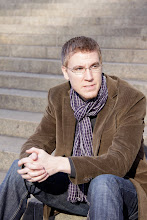Most recently I picked up Mark Husbands and Daniel J. Treier’s edited volume The Community of The Word: Toward an Evangelical Ecclesiology. William Dyrness’ article “Spaces for an Evangelical Ecclesiology” brought together several of my theological interests: space, ecclesiology and liturgy. Dyrness picks up on Hannah Arendt’s comment that the “institution adds to belief is the public space of appearance.”[1] Essentially the church embodies its theology in the world. But what shape does the church take on in public space? American ecclesiology has suffered because of the privatization of faith and thus ceding any real public space. Dyrness feels that what happens at church is the key to understand what the church is in its nature. Within the liturgy of the church, the performance of liturgy actually effects or constitutes what they celebrate and honor.[2] The church’s theological identity is cultivated in a physical and spatial realm.
Dyrness describes three ways the church is constituted in social space: interpersonal unity of all believers, its particular practices shape the body, and the first two conceptions relate to all other spaces in the world.[3]
Dyrness also suggest the church occupies a particular historical space. Again the privatized and unmediated conversion event so prevalent in evangelical history falsely assumes that it is disconnected from a tradition. Ironically it does not recognize that this itself is a tradition. All church communities are the product of some form of tradition. These traditions give a firm footing to stand on, as well as “[4]nourishment of our ecclesiastical identity.”
He also suggest a third conception of space the church entertains: symbolic space. Dyrness argues that this if this is not the most important, it is the most salient, and most difficult for evangelicals to grasp.[5] For evangelicals, it is more than a suspicion of culture, rather “symbolic illiteracy” where symbols have been replaced by signs.[6] With our imaginations dimmed, no longer do we understand how things, places, or acts can teach or nurture because they have been weeded out of the evangelical tradition. This state now seems the norm. Dyrness helpfully recounts how the Reformed tradition denied the symbolic potential of spaces by locking the churches, thus creating a metaphor that particular spaces were symbolically vacant. The pulpit and sanctuary only held meaning during the performance. They were still often beautiful but were primarily utilitarian; without any symbolic significance. This emptiness was the result of a positive impulse of sending the gospel into the world. Philosophically the same thing was going on.
Following on from the Medieval expanding place into space came the dismissal of the power of particular places. Space was homogeneous and the norm thereby diminishing places to mere subdivisions of space.[7] We perhaps can also see the hegemony of time entering the theological realm as granting or constitutive of the validity of place. Only at certain times do places have meaning. Outside of those events, the particular places slip back into homogenous space. Rather than time happening in place; place happens in time and to a lesser degree space.
All three spheres are needed to constitute or incarnate the church in the world because they give us “fixed points by which we orient ourselves.”[8] While Dyrness uses “space” in different ways (metaphorical, physical, historical, sociological) all three have wonderful potential for further study. The emphasis on the visible church by its constitutive practices would make a very exciting study within the idea of place. I think ecclesiology has much to regain from the atomized privatization so ingrained in evangelicalism. Sheldrake’s words are helpful here suggesting that the people of God are the place of God, described in Paul’s words as the temple of the Spirit.[9]
The historical place is really contextualization or realization of place within a historical framework. Studies from this perspective need to be aware of both present and historical contexts and the distance between for application. Dyrness’ conception of symbolic space is powerful and important. It is helpful to see how historical traditions have eliminated imagination from our consciousness. I should return to Casey to see how this might mirror the hegemony of time over place, and space over place. With the shift of the liturgy and conversion to “event” which is really a time consideration, there should be some parallels. For all the fruit of the others, I do appreciate a return to symbolic spaces or places. These places, things, and acts really do give us tangible and public means of orienting our lives within. If we are to emerge from the privatization of faith, we must give public or spatial expression of what the church is.
[1] William Dyrness “Spaces for an Evangelical Ecclesiology” in The Community of the Word: Toward an Evangelical Ecclesiology, ed. Mark Husbands & Daniel J. Treier (Downers Grove, IL: IVP), 252. Dyrness quotes from Paul Ricoeur, Figuring the Sacred: Religion, Narrative, and Imagination.
[2] Ibid., 253.
[3] Ibid., 255-261.
[4] Ibid., 266.
[5] Ibid.
[6] Ibid., 267.
[7] Casey, 134.
[8] Dyrness, 271.
[9] Sheldrake 37-38.
skip to main |
skip to sidebar


An axis of access is a sacred place which our life revolves around. We hold them dear in our memory. They thrive in our imagination. They root us to this world. (To read more about the nature of this blog read the originating post from 08.07.07)
About Me

- rstander
- Grand Forks, ND, United States
- i am recent MFA grad from University of North Dakota. while i have range of interests, my ongoing research continues to explore the nature of place/space through artistic and liturgical lenses.
Blog Archive
-
▼
2007
(58)
-
▼
December
(15)
- The Ironic Violence of Cheryl Kirk-Duggan`s Violen...
- CTS-AAR Photos I
- CTS-AAR Photos II
- CTS-AAR Photos III
- CTS-AAR Photos IV
- CTS-AAR Photos V
- CTS-AAR Photos VI
- Ecclesial and Social Space
- american gothic
- Jewelry by Nicole Vanderhill
- a peculiar people
- Santa, St. Nicholas, and Touchdown Jesus
- "And his name shall be called snacks are with us":...
- Place and Plurality of Meanings
- Place & Placelessness
-
▼
December
(15)
Labels
- abandonment
- aesthetics
- architecture
- Art
- artists
- books
- canada
- cartography
- commodified memory
- consumerism
- contested space
- CTS-AAR Photos
- Devotions
- Elevator Series
- Film
- graffiti
- individualism
- iowa
- kitsch
- lectionary readings
- liturgy
- Luke
- Mark
- minnesota
- misc.
- misc. education
- Montana
- music
- nationalism
- new topographics
- North Dakota
- northwestern college
- photographers
- photography
- pilgrimage
- PKAP
- priests in film
- printmaking
- Psalms
- questioning God
- religion as a chain of memory series
- retro signage
- sacred space
- saskatchewan
- scripture
- shoes
- sioux falls seminary
- south dakota
- stray shopping carts
- TH 541
- theological musings
- threshold series
- University of North Dakota
- Video
- visiting artists
- weather reports
Explore
- University of North Dakota
- Sioux Falls Seminary
- Northwestern College
- The Chronicle of Higher Education
- Inside Higher Ed
- College Theology Society
- Image Journal
- Christians in the Visual Arts (CIVA)
- College Art Association
- National Association of Baptist Professors of Religion (NABPR)
- American Academy of Religion
- The Ekklesia Project
- Speaking of Faith
- NT Wright Page
- Textweek.com
- Good Shepherd Episcopal
- Internet Movie Data Base (IMDB)
- The Simpson's
Exhibition Opportunities
Theology & The Arts
Theology and the Arts Academic Programs
My Blog List






